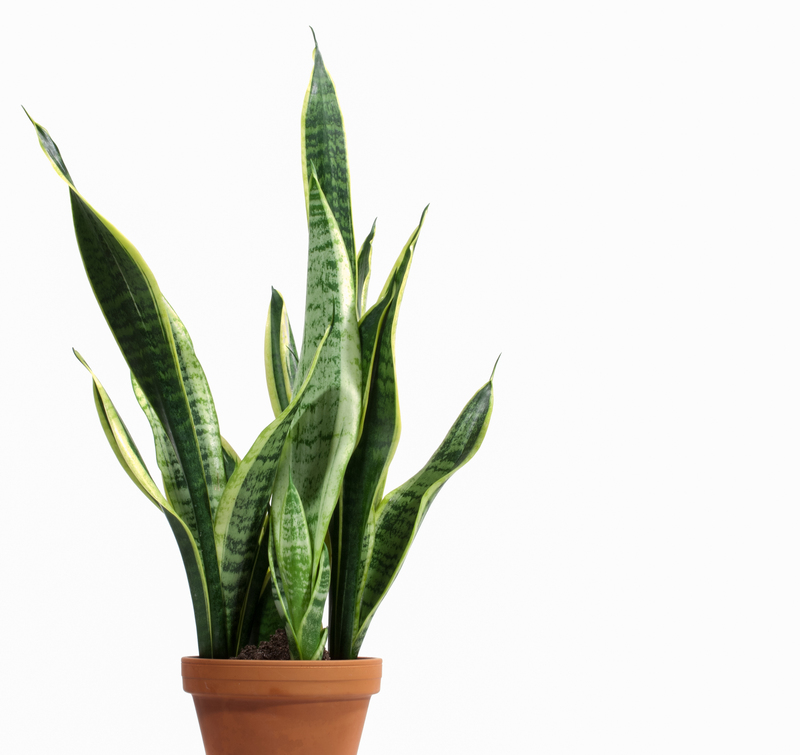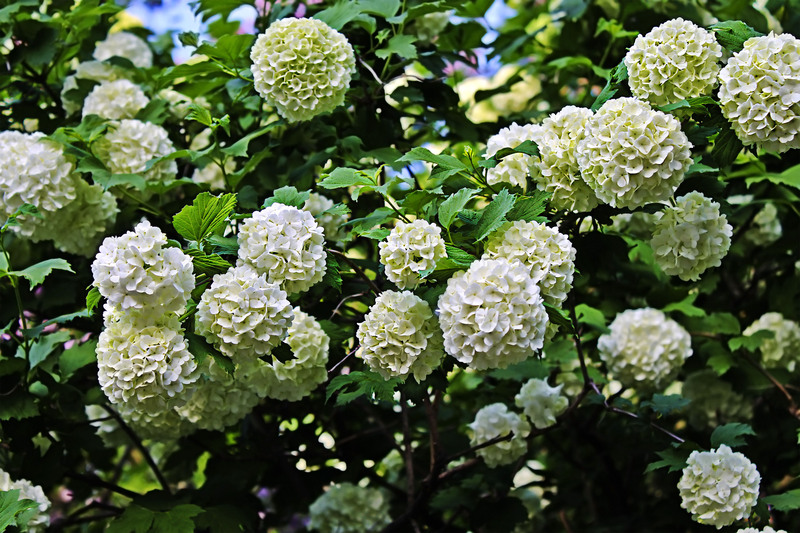Transform your orchids with proper care
Posted on 27/08/2025
Transform Your Orchids with Proper Care
Are your orchids struggling to bloom or thrive? You're not alone. Orchids are one of the most popular houseplants in the world, admired for their exquisite beauty and unique flowers. However, many plant lovers find orchids challenging to maintain. Fortunately, transforming your orchids with proper care is easier than you think! In this comprehensive guide, you'll discover everything you need to grow healthy, blooming orchids at home. Whether you're a beginner or an experienced enthusiast, these expert tips will help you achieve vivid blooms and robust plants year-round.

Why Proper Orchid Care is Essential
Orchids are a diverse family of flowering plants with over 25,000 species and 100,000 hybrids. This diversity means that their care requirements can vary, but all orchids benefit from a few fundamental principles of cultivation. Proper orchid care will:
- Encourage vibrant, long-lasting blooms
- Prevent common diseases and pests
- Promote healthy root growth
- Extend the lifespan of your orchid plants
By understanding and meeting the unique needs of your orchid, you'll transform your orchids into living masterpieces that enhance any space.
Understanding Your Orchid's Needs
The secret to successful orchid care is recognizing the specific requirements of your plant. The most commonly grown orchids are:
- Phalaenopsis (Moth Orchid)
- Cattleya
- Dendrobium
- Oncidium (Dancing Lady Orchid)
While there are differences in their preferences, most orchids thrive when their basic needs are met. Let's break down the keys to transforming your orchids with proper care step by step.
1. The Right Light for Thriving Orchids
Light is perhaps the most critical factor in orchid plant care. Insufficient light prevents blooming, while excess sun can scorch the leaves.
- Phalaenopsis: Prefers bright, indirect light; avoid direct sun.
- Cattleya and Dendrobium: Need more light and can tolerate some morning direct sun.
- Oncidium: Flourishes in moderate, filtered light.
Signs your orchid is getting the right light:
- Healthy, medium green leaves
- Consistent blooming each year
Place your orchids near an east or north-facing window. If you lack natural light, full-spectrum grow lights can effectively revitalize your orchids with proper care.
2. Mastering Orchid Watering Techniques
Overwatering is one of the most common mistakes in orchid care routines. Orchids prefer to dry out slightly between waterings.
- Use room-temperature, filtered water.
- Water only when the potting mix is nearly dry.
- Ensure pots have drainage holes to prevent root rot.
- Water less frequently in winter, more in summer.
Tip: Insert your finger into the mix; if it feels dry an inch below the surface, it's time to water.
Following these watering tips will transform your orchids with proper hydration and help prevent root rot.
3. Humidity: Creating the Ideal Orchid Environment
Orchids are native to tropical regions where humidity is high, usually between 40-70%.
- Place a humidity tray near your orchids or use a room humidifier.
- Mist lightly in the morning to avoid fungal diseases.
- Keep orchids away from drafts and heating vents.
Proper humidity supports robust growth and transforms your orchids into lush, breathtaking plants.
4. Temperature Requirements for Orchids
Most popular orchids prefer:
- Day temperatures: 65-80?F (18-27?C)
- Night temperatures: 60-65?F (15-18?C)
A slight nightly temperature drop stimulates blooming, especially in Phalaenopsis. Avoid exposing your orchids to cold drafts or sudden heat, as these extremes can harm sensitive plants and inhibit flowering.
5. Choosing the Best Orchid Potting Medium
Orchids do not thrive in regular potting soil. Instead, to transform your orchids with proper care, use a specialized medium such as:
- Bark chips (pine or fir)
- Sphagnum moss
- Coconut husk chips
- Perlite or charcoal
These materials allow for optimal airflow to orchid roots, preventing disease and supporting healthy growth. Repot your orchids every 1-2 years to refresh the medium and remove any dead roots.
6. Fertilizing: Nourishing Your Orchids
Proper fertilization is essential for vigorous, blooming orchids. Use a balanced, water-soluble fertilizer formulated for orchids. The general rule is: "Weakly, weekly."
- Fertilize at half the recommended strength, once a week during active growth.
- Reduce feeding during the dormant period (winter).
- Flush the pot with water once a month to prevent salt buildup.
This practice delivers essential nutrients, helping you transform your orchids for continuous flourishing.
Troubleshooting Common Orchid Problems
Even with careful attention, orchids can sometimes display signs of distress. Here's how to diagnose and resolve common issues:
- Yellow Leaves: Usually due to overwatering or aged foliage. Allow the medium to dry before watering again.
- Root Rot: Caused by excess moisture; use a well-draining pot and replace the potting medium if necessary.
- No Blooms: Typically means insufficient light or inadequate temperature drop at night.
- Pests: Watch for mealybugs, spider mites, and scale. Treat with insecticidal soap and isolate affected plants.
Early intervention is key. Regularly inspect your plants to keep them healthy and transform your orchids with proper care from the first sign of trouble.
Advanced Orchid Care Tips for Stunning Blooms
Encouraging Re-blooming
Many orchid types, especially Phalaenopsis, can bloom again from old spikes. After the flowers fade:
- Trim the spike just above a node (bump) to encourage a new branch.
- Continue regular care and increase light exposure as the days lengthen.
This will help you see more flowers throughout the year, transforming your orchids into multi-blooming wonders.
Repotting for Healthy Growth
Healthy roots are the foundation of beautiful orchids. Repot your orchid if you notice:
- Bark medium is breaking down or becoming compacted
- Roots are brown, mushy, or overcrowded
Always use sterile scissors and fresh medium. Repotting revitalizes your plant and can dramatically transform your orchids' health and vigor.
Creating an Orchid-Friendly Display
Orchids can be showcased in creative ways:
- Group several plants together for added humidity
- Hang orchids in mesh baskets for a tropical look
- Use decorative cache-pots for stylish indoor decor
These arrangements not only beautify your space but also make it easier to care for your collection.
Frequently Asked Questions About Orchid Care
How often should I water my orchid?
This depends on the orchid type, potting medium, and environment. Typically, water every 7-10 days. Ensure the medium is nearly dry before the next watering. For orchid care transformation, adjust your routine by monitoring moisture levels closely.
Why are my orchid's leaves wrinkled?
Wrinkled leaves generally indicate dehydration or root damage. Check for healthy, firm roots and review your watering technique.
Can I use tap water on my orchids?
If your tap water is soft and free from excessive chlorine or fluoride, it should be safe. Distilled or rainwater is preferable for sensitive varieties.
Do orchids need to rest (dormancy)?
Some species, like Dendrobiums and Cattleyas, benefit from a winter rest period with less water and fertilizer. Pay attention to your plant's cycle for the best results.
Essential Tools & Supplies for Orchid Transformation
Investing in a few quality orchid care supplies can make all the difference:
- Bark or specialty orchid potting mix
- Clear pots with drainage holes
- Orchid-specific fertilizer
- Watering can with a fine spout
- Humidity tray or small humidifier
- Sterile scissors for pruning roots and spikes
Having the right tools streamlines your routine and empowers you to care for your orchids with confidence.

Enjoy the Rewards of Transformed Orchids
With proper orchid care, even the most reluctant bloomers can become flourishing centerpieces in your home. Remember, patience and observation are fundamental. Each orchid is unique and will communicate its needs through its leaves, roots, and flowers. Transform your orchids with proper care by:
- Providing the correct amount of light and humidity
- Watering mindfully, neither over nor under-doing it
- Fertilizing with balanced nutrients at the right time
- Repotting regularly into suitable medium
- Protecting from common pests and diseases
In return, your orchids will reward you with dazzling blooms and lush, vibrant growth. Whether you display a single elegant moth orchid or an entire collection, the satisfaction of transforming your orchids with care and attention is worth every effort!
Start your journey today and witness how proper care can dramatically transform your orchids into thriving, beautiful plants year after year.
Related Articles
- How to Repot Your Orchid: Step-by-Step Guide
- Top 10 Mistakes in Orchid Care (And How to Avoid Them)
- Choosing the Best Orchid Varieties for Beginners
If you loved these tips on transforming your orchids, share this article and inspire others to enjoy the magic of proper orchid care!

